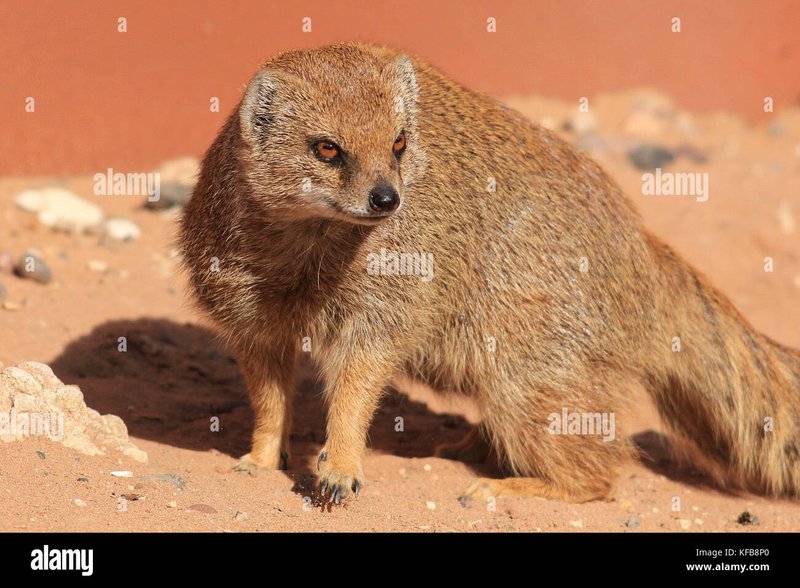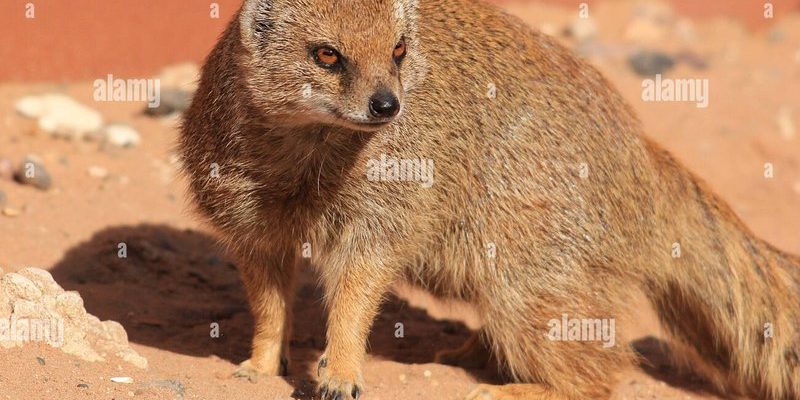
Yellow mongooses, primarily found in southern Africa, have striking golden-yellow fur and a playful demeanor. They generally live in burrows and are known for their social behavior. Now, you might be wondering, what happens if one crosses your path? Should you run away, or can you stick around to observe? This article will guide you on how to react safely and respectfully in the presence of these charming creatures.
Understanding the Yellow Mongoose
Before diving into what to do when you meet a yellow mongoose, it’s helpful to know a bit about them. These little guys are part of the mongoose family and usually weigh between 1.5 to 5.5 pounds. With their long, slender bodies and bushy tails, they’re well-adapted for life on the go.
Yellow mongooses are diurnal, meaning they’re active during the day. They often roam in small groups, foraging for insects, small mammals, and even fruits. Imagine them as playful little scavengers, always on the lookout for their next snack. You’ll typically spot them in open grasslands, savannas, or scrublands, where they can easily spot predators and find food.
Being social and curious, yellow mongooses often stand on their hind legs to survey their surroundings, just like a kid peeking over a fence. If you see one doing this, it means they’re not just cute but also very aware of their environment.
Stay Calm and Observe
First things first, if you encounter a yellow mongoose, **stay calm**. They might look cute and cuddly, but like any wild animal, they can be unpredictable. Instead of panicking, take a moment to breathe deeply and observe from a safe distance.
While you’re watching, try to capture the moment in your memory or with a camera, if you have one. Not only is this a great opportunity for wildlife photography, but it’s also a chance to enjoy the beauty of nature. Remember, they might be curious about you, too!
Here’s what to pay attention to:
- Body language: Are they relaxed or agitated?
- Group dynamics: Are they alone or with a pack?
- Movement: Are they approaching you, or keeping their distance?
Understanding their behavior can give you insight into how to react. If they’re playful and relaxed, you might have a delightful viewing experience.
Keep Your Distance
While it might be tempting to get a closer look, **keeping your distance** is crucial. Wild animals can become stressed or act defensively if they feel threatened. This means no sudden movements or loud noises. Even if they look friendly, it’s essential to respect their space.
If you’re observing a yellow mongoose, aim to stay at least 20–30 feet away. This distance ensures that they feel safe and allows you to enjoy the encounter without disrupting their natural behavior.
If you’re in a national park or reserve, remember that these areas often have rules about wildlife interaction. Familiarize yourself with local guidelines. For instance, many parks advise against getting closer than a designated distance from any wild animal. Following these rules helps protect both you and the mongoose.
What To Do If It Approaches You
Sometimes, a yellow mongoose might decide to come closer. If this happens, **don’t panic**! They are generally curious and might just want to investigate. Here are some tips on how to handle such a scenario:
1. **Stand Still**: Avoid making sudden movements. Standing still can help the mongoose feel more at ease.
2. **Observe**: Watch its behavior. Is it sniffing around? Is it showing signs of aggression, like growling? If it looks relaxed, you can stay put and enjoy the moment.
3. **Back Away Slowly**: If it gets too close for comfort, slowly back away. Don’t turn your back on it or run, as this could startle the animal.
Remember, while yellow mongooses can be playful, they are still wild animals. They might bite if they feel threatened or cornered, so keeping interactions safe and respectful is vital.
Feeding or Luring Them
You might be tempted to feed a yellow mongoose, but here’s the thing: **don’t!** Feeding wild animals can lead to all sorts of problems. It disrupts their natural foraging behavior and can make them reliant on humans for food.
Imagine a scenario where they get used to human food. This could become dangerous for them, as they might venture closer to roads or populated areas, putting themselves at risk.
Plus, you wouldn’t want to start a habit of luring mongooses with food. They may expect snacks every time they see people, which can lead to more dangerous encounters in the future. Enjoy the experience of watching them hunt and forage naturally.
Report Your Encounter
After your amazing encounter, consider reporting it if you’re in a national park or wildlife reserve. Many parks have systems in place to track wildlife sightings. This information is valuable for conservation efforts and helps park services understand animal behaviors and populations.
Reporting can usually be done through visitor centers or park rangers. You’ll often find that wildlife enthusiasts and researchers appreciate hearing about these encounters. Plus, it could be a fun way to share your story with others who share your love for nature.
You might think of it as contributing to a larger narrative of wildlife preservation. Imagine being part of a community that values and protects such unique creatures!
Practice Responsible Wildlife Viewing
Finally, let’s chat about the importance of responsible wildlife viewing. When observing yellow mongooses or any wild animals, keep these things in mind:
- Respect their space: Always maintain a safe distance.
- Leave no trace: Take your trash with you and don’t disturb their habitats.
- Use binoculars or a zoom lens: This allows you to see closely without intruding.
Every encounter you have with wildlife is a chance to learn and connect with nature. By practicing responsible viewing, you can help ensure that these beautiful creatures thrive for generations to come.
In conclusion, encountering a yellow mongoose in the wild can be an unforgettable experience. By staying calm, observing from a distance, and respecting their space, you can enjoy their playful nature while keeping both you and the mongoose safe. Remember, every time you step into nature, you’re part of a larger ecosystem. Let’s make sure we treasure and protect it—one yellow mongoose at a time!

